I’ve been wondering lately; is the old price guide model of valuing comics based on where they fit in the numerical sequence out of date?
Don’t tell me the guide doesn’t matter, most of us still buy off guide values, we feel all giddy when picking up that nice early issue off auction sites at 47% of guide. Maybe 47% guide is still too much?
If a comic has no major differentiating features, like major guest artist, introduction of a new character etc, should that #6 be worth more than that #7 just because?
Comics are very visual, what if the cover to #7 was way cooler than the cover to #6 but both were just run books?
What would be wrong with the a price guide pricing a #7 more than a #6 just because the cover looks cooler? I’m sure online CGC sales histories would show the #7 to be worth more, all other things being equal.
Let’s take it one step further. Should say a #6 be worth more than a #17 where the #6 is a run book while the #17 introduces a major new character. The #6 by its sheer number-ness trumps the #17 even though the #17 brings a major new character to the table. Here I’d like to use the example of Fantastic Four #29 vs Fantastic Four #45. Yes the #29 is a year and a bit earlier but it’s basically a run book while issue #45 introduces the Inhumans! Compare the Inhumans issue #45 guide value of $575 to the #29 guide value of $625 (all the example I’ll use may not be the best ones out there but at least you get the gist of what I’m trying to say).
Comic book collecting is changing. The current high cost of collectible comics means fewer comics are attainable for the average collector. This fact is forcing collectors to make choices, forcing them into collecting strains like keys, arcs, artists, covers, eras etc, each strain catered to the collectors tastes and pocket-book, these collecting strains are all gaining while the hardcore, in the trenches completist list is waning.
Covers, I sell Amazing Spider-Man #43 in nice mid grade shape all day at full guide yet an issue like Amazing Spider-Man #24 which is listed at almost 2.5 times the #43 value at a 7.0 grade never moves at guide, I have to discount it. Amazing Spider-Man #24 gets much of its guide value from the antiquated values system based on the sequence # on its cover.
Eras are a very interesting point. I find it next to impossible to sell Detectives from say #150 to #250 in the mid grades, save a few special issues, mostly because of the value assigned to them in the guide, but Detectives from #350 to #450 move briskly out of the bins. There is a generational disconnect with the older issues yet the guide and indeed the public perception is that these late Golden Age/early Silver Age books must be worth 3 to 4 times more than the currently much more popular and much more collected late Silver/early Bronze Age because they are earlier #s.
Here are some other quick examples;
- Why is Daredevil #9 worth more than Daredevil #18?
- Why is X-Men #6 worth more than X-Men #12?
- Why is Superman #5 worth more than Superman #14?
- Why is Fantastic Four #2 worth more than Fantastic Four #4?
So with less and less collectors interested in a generic numbered run book and more and more collectors interested in say a 1st appearance it would seem that issue # alone should not be as important a determinant of value as it has been in the past, and as it still is today.

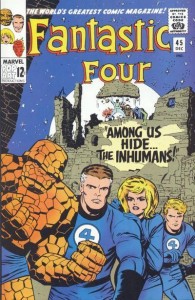
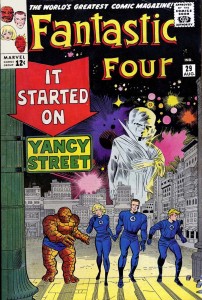
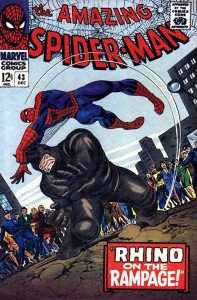
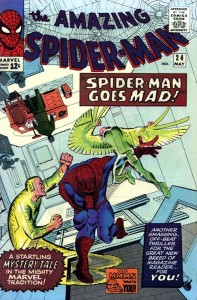
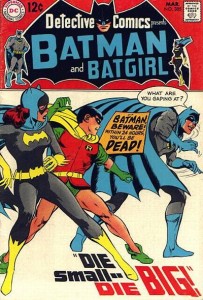
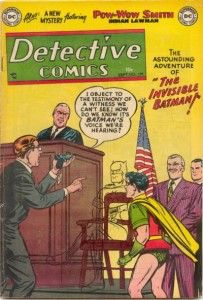
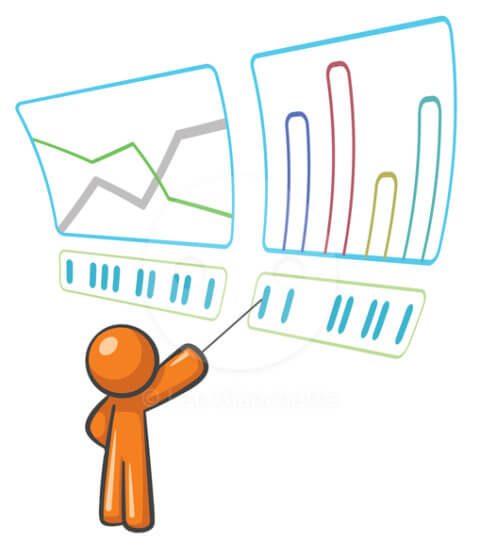

I started collecting about four years ago and it never occurred to me to buy runs. With so much emphasis on the need to buy CGC copies to avoid restoration, it’s just too expensive to do anything but collect keys and nice covers. The only runs I have are of very cheap reader copies. Is there a real time price guide out there, tracking point-of-sale and online purchases and continuously updating? Does the website Comics Price Guide do that?That would presumably reflect the market better than an algorithm, but I find the CPG still doesn’t seem to echo what I see on eBay, Heritage etc. But even eBay can fluctuate wildly between one sale and the next – I suppose that’s part of the fun!
Walter – Back in the last century, it may have been more difficult for Robert Overstreet to to justify valuing a later issue higher or near equal to an earlier issue with the lack of cgc census and Internet data. It was natural to assume that as a series became more popular, that later issues would be more plentiful, with more saved in higher grade. Also, with the daunting number of comics it would just be more simple and defensible to price older issues higher. Nowadays the data is available to price more like you have suggested and perhaps that would be the better course. However, Robert Overstreet knows that prices can fluctuate based on recent sales, movies, the economy, etc. He would no doubt be criticized if he increased a popular issue by 50%, then two years later dropped it back down below the old price when the popularity waned. Even if these corrections were only 5% of his adjustments, people would criticize. In the Overstreet price guide, I imagine that some people feel more secure when they are not finding dramatic price swings. So, I am not defending Overstreet, but simply trying to understand his reasoning.
One more thought. If the US economy improves (big if), we might see more people with more disposable income going back to trying to complete runs. Maybe? Either way, comic book interest has grown so dramatically in our pop culture, that increased disposable income, I suggest, will translate into a growth in comic book investments.
You raise some good points, but I think Overstreet shouldn’t be concerned about criticism, and begin attaching true values to books. Comics values, are driven by story/character as much as age/rarity. A book shouldn’t retain value just because it is old if there is no demand. Back issue sales suffer because of this. Dealers have become hoarders because they are beholden to unrealistic guide prices. There is as much integrity lost by ignoring trends as there is in over-pricing vintage books nobody is buying. This will hit fever pitch when the Baby Boomers are gone, and the demand for GA and SA books bottoms out. It is wiser to show price elasticity. Dealers could actually start selling these books at fair market value and may even stimulate new interest and sell more. If a dealer set up a booth and put up a mid-grade copy of Tom Mix 11 for $50 and a high grade copy of Marvel Preview 7 for $50…I think its a sure bet the Marvel Preview 7 is going to go faster. Will it retain its value in 2 years? Maybe not. But in that same two years, I’d bet that same dealer moves more copies of Marvel Premiere 7 than any issue of Tom Mix. It would be easy enough for Overstreet to employ algorithms that sum dealer sales and auction sales on a monthly basis and dump these results into a site or app. I suspect prices on GA and SA books haven’t normalized because to do so…a lot of these long time dealers of vintage books (many of whom double as Overstreet advisers) with dealer stocks with retail values of several hundreds of thousands of dollars don’t want that to erode.
I’m sure any dealer would hate to liquidate his or her dealer stock today. I know I’m less and less concerned with the run books and am willing to pay more and more for the keys.
i dont KNOW anything about anything – but i THINK its foolish to assume ANY investment (comics, real estate, gold, etc) will be predictable in any definite way, even if the past supports future growth. anything can fall in price and value. CGC can be rendered bullshit in the future, comics can be of less interest and specific issues may not mean anything to younger buyers when theyre older and we are trying to move our collection (see above example of Tom Mix (who?) vs. Marvel Preview) – i continually wonder why any comic buyer in 30 years will care about any particular character that i care about.(not the main ones like Spiderman but the lesser known ones like say Deadman). you may have hit the nail on the head in surmising that Overstreet will NEVER lower the value of any comics once its gone up, even when they should be regularly because it undermines the collectible comic market. i dont live and die by Overstreet anyway, its kind of a one-man show – my first price guide wasnt even Overstreet’s it was that other one, and the pricing was a LOT lower. while im soapboxing – i also call B.S. on any need to grade anything above 9.0 at 9.2, 9.4, 9.6, & 9.8 – i mean you need a magnifying glass to tell the difference. thats some serious CGC crap right there. should be 9.0, 9.5, 10.0 (10.0 would be virtually unattainable) and thats it.
as always the bottom line is: pay as little as you can & something is only worth what you can get for it.
Rob nice comment, I especially would love to hear what someone from CGC, and someone like Rob Bruce would say about your 9.0/9.5/and virtually unattainable 10 opinion, which I think sounds great -it does sound sketch’ when you get down to the minutia of 9.6 vs 9.8, especially when someone re=sends the comic in, and receives a different score…
Overall though, this would not even be a topic if Marvel, and DC (85% of the market) paid more attention to “Sequential Art”, and less to brand identity, speculator;bubbles, character backgrounds that are still based on Comics Code Authority conservative=extremist censorship tactics, homo-erotic power fantasy fulfillment, and repetitive predictable events, and more branding overpriced pamphlets. Even Will Eisner enjoyed the magazine-sized format. Please also note, Marvel ‘branding’ Jane Foster w/cancer is *u(k!ng disgusting -having her overdoes from an Oxycotin addiction, or if you are going to give her ‘cancer’brand then having her die of prolonged drug treatments, instead of a cure would be the “realistic world setting” that Marvel keeps flailing with their general “brand identity” when they contrast themselves with DC.comics -then have Thor give up being such a benevolent ‘God’, and show some tough love for Midgardians that are willing to ‘treat’ their own to death, instead of cure them -or just the fact that Oxycotin sales have quadrupled since 1999, and yet no one has any money to pay for anything any more, let alone not have your job out-sourced, and yet kids today are saying how they live along traffic, and parking lost, and the unfortunate turn to heroin after they cant afford the synthetic heroin/Oxycotin -how do you not incorporate this in today’s big two ‘comics’, and still claim you are in touch with “real world setting”, but instead your readers have conversations about numbering…
What can we do to get out of this, and read more Sequential?
Yes, keep the superhero genre, Marvel, and DC have enough diversity in character=based assets that they can incorporate any kind of genre w/in their books that there is no reason today that the next Hemmingway, or Bronte of the 21st Century is not waiting to burst of out a sequential medium that even Marvel or DC can produce. Not today though, and not in the near future. If people are willing to wait in line overnight for an over-priced trendy T-shirt, or learn how to brew their own beer, or learn 3D printing, people can still be willing to complement their lives with magazine, larger book=sized sequential that is just as innovative and alluring as it’s sequential content.
And finally, two additional significant points that need to be actualized for the value of comics to go from worrying about issue numbers to a more a market w/more substance:
-Image Comics allows for more creative control, and freedom, and I think many other publishers need to begin to learn how to incorporate this -as in learn by doing, please…
-And I agree with comicbookGRRRL Laura Sneddon that Diamond Distributors monopoly on sequential distribution in the USA needs to be taken care of. How is it that WallMart is adding a “graphic novel” section, as well is Barnes and Noble expanding it’s own section for “graphic novels” (should just be called “Sequential”, as sequential itself can be subcategorized into cooking, history, educational, art, mystery, romance, action,…), and Amazon is actually opening up book stores -yet comic book stores in the Direct Market are closing -how is the World Trade Organization, and American apathy not scary? :0)
So how can today’s Marvel, and DC ‘comic books’ become sequential books/stories/art/zines? Isnt the beauty of Marvel having almost 50% of the market today that when they do begin to lose market share yet the readership/unit share increases Image, and Darkhorse can grow -it all does not have to ‘go back’ to DC.